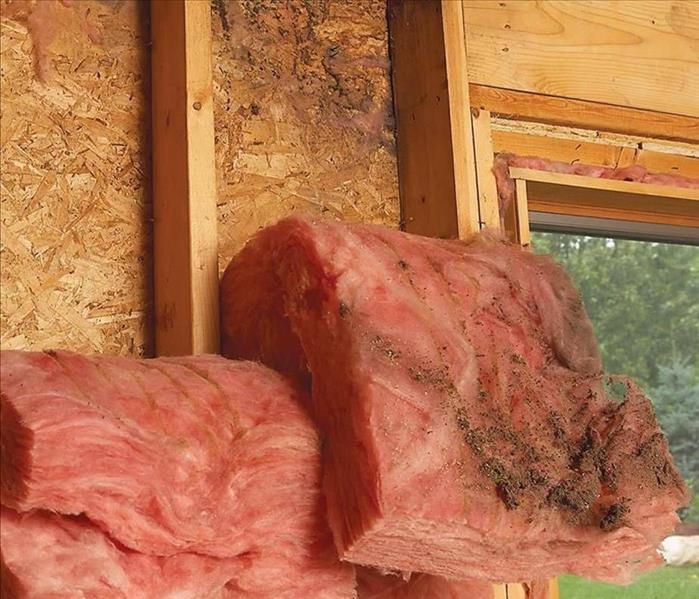Is Insulation Salvageable Following Water Damage?
12/11/2019 (Permalink)
 Insulation that is affected by water damage can lead to structural damage from both wood rot and mold growth
Insulation that is affected by water damage can lead to structural damage from both wood rot and mold growth
Homeowners who have experienced water damage from a leaky roof or a burst pipe often ask us if they can salvage the insulation in their attics or walls that have been exposed to large amounts of water. Theoretically, the answer is yes in many cases. Some popular types of insulation include fiberglass blanket, blown-in cellulose, and foam board. Depending on your type of insulation and level of water exposure, it’s possible to dry out wet insulation and put it back in its place. However, doing this takes a lot of time and effort. Here are four good reasons to replace your insulation and not salvage it.
1. Reduction in Insulating Performance
Your home’s original insulation that was installed by your builder has a rating that impacts how hard your HVAC system works to keep your home comfortable. If fiberglass or cellulose insulation products become wet, they lose their insulating properties. While it’s possible to dry fiberglass insulation, cellulose insulation is made of paper fibers and is harder to dry when water damage is widespread.
2. Invitation for Mold Growth
The presence of mold has been linked to various negative health effects. Mold needs moisture, food, and warmth to survive and thrive in your home. Wet insulation in your attic offers the ideal breeding ground for mold spores. Mold spores reproduce rather quickly. By the time that you realize your insulation is wet, these spores have likely already infested your old fiberglass or cellulose insulation. Homeowners who have foam board insulation aren’t entirely free from problems in this area either. While foam boards aren’t attractive to mold, the spores love attaching to the wood frames that surround them. The introduction of mold growth will have a serious impact on the amount you can expect to pay water damage and mold remediation companies to take care of your damage.
3. Encourages Wood Rot
Wet insulation that’s trapped in a wall cavity can weaken your home’s frame. If wet insulation isn’t properly removed or thoroughly dried, it can moisten your home’s wood framing and cause wood rot. This is also true of foam board insulation that doesn’t absorb water but that traps moisture close to surrounding wood frames.
4. Attracts Pests
Termites, carpenter ants and other pests love moistened wood, cellulose, and pulp. A colony of termites usually has over 60,000 members, and they can eat through a foot of a 2x4 in about a year according to industry experts. Termites cost American households millions of dollars in home repair projects each year. You can stop them in their tracks by fixing any leaks and replacing wet fiberglass and cellulose insulation with new insulating materials.
Conclusion
If you have experienced water damage in your property, SERVPRO of Winter Park is your first step towards taking care of your water disaster. We are expertly trained to remove all moisture and non-salvageable materials, such as installation, and get your property completely dried before mold begins to grow. We are also expert remediators should you already have a mold growth situation. Prevent further damage to your property and give the experts a call at (407) 678-5391.





 24/7 Emergency Service
24/7 Emergency Service